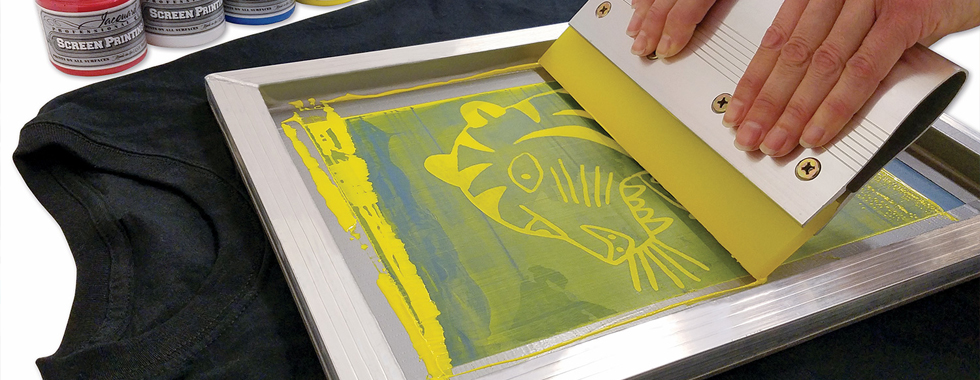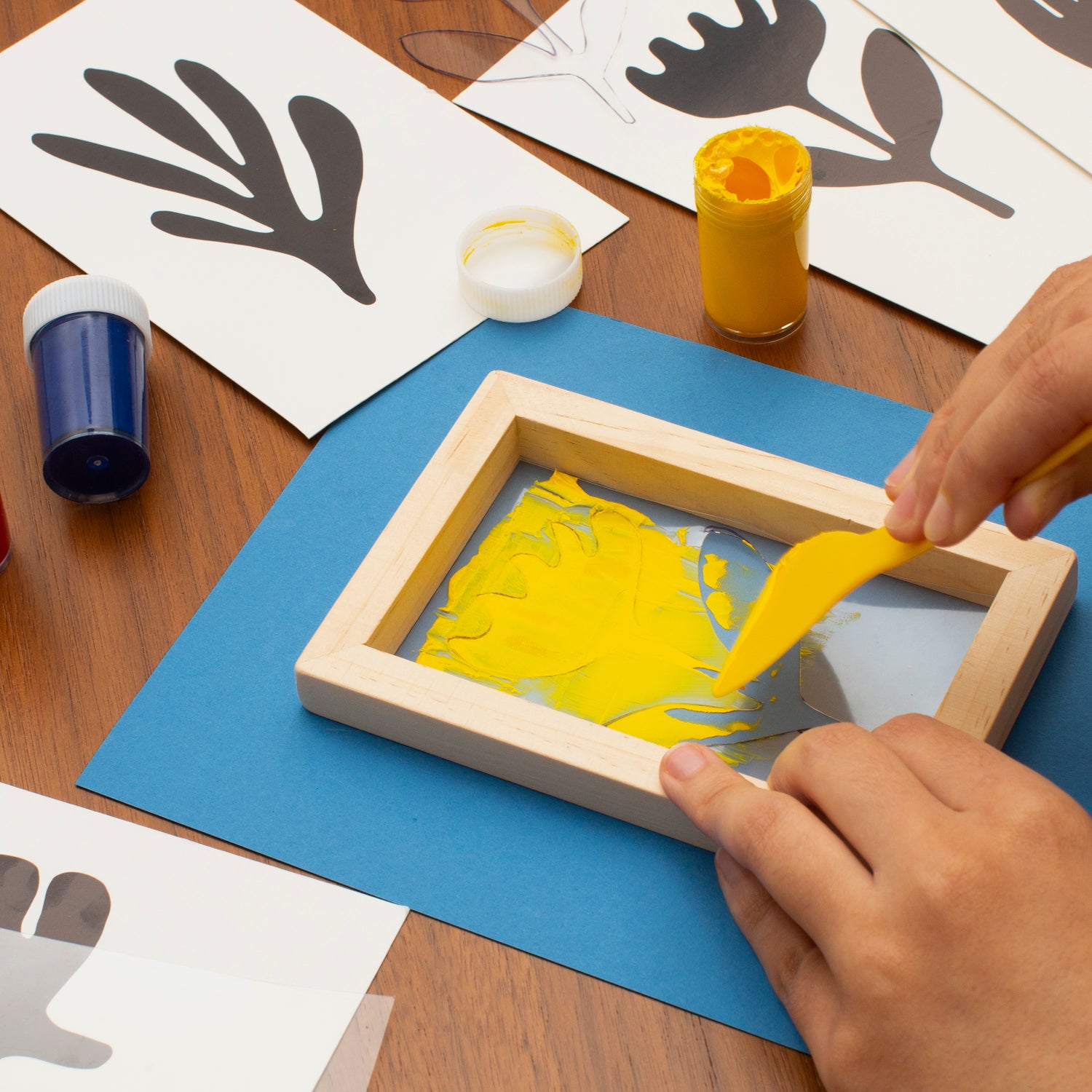ChatGPT said: Everything you need to know about 10:9 Design LLC Company and their screen printing services
The Vital Overview to Recognizing Screen Printing and Its Versatile Uses
Screen printing has a rich history that dates back to ancient times, developing right into a sophisticated method made use of across different sectors today. This guide explores the ins and outs of the screen printing procedure, outlining its applications in fashion, advertising, and home décor - 10:9 Design Embroidery. Recognizing these basics can open up creative potential for both commercial and artistic projects. The following sections will certainly reveal necessary pointers and methods to improve one's screen printing ventures
The History of Screen Printing
Screen printing has roots that trace back centuries, its evolution mirrors the technical and imaginative developments of various societies. Originating in ancient China, the method was initially made use of for enhancing textiles and later spread to Japan, where it came to be important to Ukiyo-e woodblock printing. The technique shifted to Europe in the 18th century, where it obtained appeal among artisans and industrial printers. The invention of image emulsion in the 20th century revolutionized screen printing, enabling more detailed styles and greater performance. Artists like Andy Warhol better pushed its appeal, using the tool to create renowned jobs that mixed commercialism and fine art. By the late 20th century, screen printing had actually developed itself as a flexible technique, employed in style, advertising and marketing, and great art. Today, it continues to advance, incorporating digital technology and increasing its applications across numerous sectors.
The Screen Printing Refine Explained
Screen printing transforms artistic visions right into concrete designs through a collection of specific actions. A photo is created and then moved onto a screen, typically made of fine mesh textile extended over a structure. A light-sensitive emulsion is put on the screen, which is revealed to light, setting in areas not covered by the image. After washing out the unhardened solution, a pattern is formed.
Next, the screen is placed over the substrate, whether it be fabric, paper, or another material. Ink is after that pushed via the open areas of the pattern making use of a squeegee, transferring the layout onto the substratum below. This procedure can be repeated for multiple colors, requiring separate screens for every tone. The printed item is cured utilizing warm to ensure the ink adheres correctly, resulting in a durable, vibrant design all set for usage.
Sorts Of Screen Printing Techniques

Additionally, specialty methods, such as discharge screen printing, get rid of color from the textile to create softer prints, while foil screen printing applies metallic foil to achieve a shiny surface (10:9 Design Screen Printing Texas). Each strategy supplies distinct attributes, accommodating various imaginative needs and production ranges, ultimately broadening the opportunities within the screen printing domain name
Applications of Screen Printing in Different Industries

Furthermore, the signage and marketing fields make use of screen printing for creating distinctive displays and banners. This method permits bold colors and intricate layouts that capture focus. In electronic devices, screen printing is utilized for using conductive inks to circuit card, vital for element links. In addition, the home design market embraces screen printing to create distinct designs on fabrics and wall art. Overall, screen printing offers as an important tool throughout diverse fields, improving items with individualized and aesthetically attractive graphics.
Tips for Successful Screen Printing Projects
While carrying out a screen printing project, mindful interest to detail can significantly boost the final outcome. Choosing top quality products is essential; this includes the screen, inks, and substratums. Making use of ideal mesh counts can impact ink deposition and detail click here resolution. Prep work is just as essential; thorough cleaning of screens and appropriate exposure times ensure crisp prints.
Next off, exact registration is essential for multi-color prints. Utilizing alignment tools can assist attain exact layering. In addition, testing prints on scrap materials before manufacturing helps determine prospective concerns without throwing away resources.

Regularly Asked Inquiries
What Materials Are Best for Screen Printing on Textile?
Cotton and polyester blends are perfect for screen printing on textile due to their durability and ink absorption. Furthermore, specialized fabrics like silk or canvas can create unique structures and surfaces, enhancing the total style high quality.
Just how Do I Tidy and Maintain Screen Printing Equipment?
To preserve and cleanse screen printing devices, one must on a regular basis clean screens with ideal solvents, inspect squeegees for wear, lube relocating components, and shop all things in a dry, dust-free environment to extend their life-span.
What Are the Environmental Impacts of Screen Printing?
Screen printing can have considerable ecological effects, consisting of chemical waste from solvents and inks, water usage during cleaning processes, and energy intake. Environmentally friendly materials and lasting techniques are crucial for reducing these unfavorable impacts.
Can Screen Printing Be Done in the house Properly?
Screen printing can be efficiently done at home with the right materials and techniques. Enthusiasts can create quality prints, though success relies on their skill level, tools, and understanding of the process included.
What Are the Expenses Associated With Beginning a Screen Printing Organization?

Beginning a screen printing business entails expenses for tools, materials, and work area. First costs normally vary from a few hundred to numerous thousand dollars, depending on the scale, top quality of machinery, and preferred manufacturing capability.
Screen printing has an abundant background that dates back to old times, progressing right into an advanced technique made use of across different sectors today. One more strategy, rotary screen printing, employs round screens, facilitating continual printing on fabric rolls, therefore improving performance for large-scale productions. In addition, specialized techniques, such as discharge screen printing, get rid of dye from the material to develop softer prints, while foil screen printing applies metallic aluminum foil to attain a glossy finish. In the fashion market, screen printing is extensively utilized to develop dynamic styles on garments, allowing brands to display their one-of-a-kind designs. Cotton and polyester blends are perfect for screen printing on material due to their resilience and ink absorption.